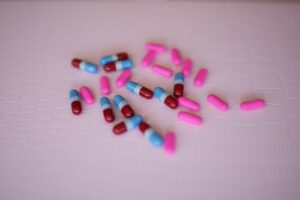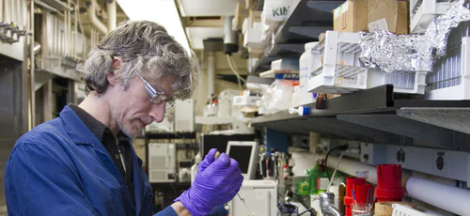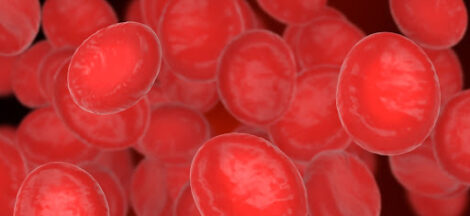When you and your partner talk to a doctor about infertility treatment, they may recommend “artificial insemination,” a straightforward process with few side effects that can help some couples who haven’t been able to conceive.
A doctor transfers sperm directly into a woman’s cervix, fallopian tubes, or uterus during artificial insemination.The most popular approach is “intrauterine insemination (IUI),” in which sperm is placed in the uterus by a doctor. It shortens the sperm’s journey and avoids any potential obstacles. This procedure may be suggested first as a treatment for infertility by your doctor.
Who is eligible for Artificial Insemination?
Women experiencing infertility, or the inability to conceive despite having regular unprotected sex, may benefit from artificial insemination. Artificial intelligence can help with male factor infertility caused by low sperm count, motility, or manoeuvrability.
It can also help with infertility in women with thick cervical mucus, endometriosis, or malformed reproductive organs. An artificial insemination is also an option for single women and same-sex relationships; donor sperm is frequently utilized in these cases.
What types of infertility can get treated with artificial insemination?
The treatment can be used to treat a variety of reproductive issues. It’s commonly utilized in male infertility situations when sperm counts are low, or sperm aren’t robust enough to travel through the cervix and up into the fallopian tubes. When it comes to female infertility, it’s occasionally done if you have endometriosis or other abnormalities in your reproductive organs.
If you have “unreceptive cervical mucus,” which means the mucus surrounding the cervix stops sperm from entering your uterus and fallopian tubes, this procedure may be ideal for you. Artificial insemination allows the sperm to bypass the cervical mucus altogether. When doctors can’t figure out why a couple is infertile, they frequently recommend artificial insemination.
What is the process of Artificial Insemination?

Your doctor will utilize ovulation kits, ultrasound, or blood testing to ensure you’re ovulating when you have artificial insemination. Your spouse will then be required to produce a sample of their sperm. To ensure that your partner’s sperm count is high, the doctor will recommend that they forgo sex for 2 to 5 days before the surgery.
Your partner may be able to collect a semen sample at home if you live close to the clinic. They’ll do it in a private room if they don’t have one. Because the sperm must be “washed” in a laboratory within 1 hour following ejaculation, it helps if you live close to the doctor’s office.
The “washing” of sperm in a lab removes contaminants that could cause distress and boost her chances of becoming pregnant. To separate the most active sperm, technicians liquefy the sperm at room temperature for 30 minutes before adding a nontoxic chemical. To collect the best sperm, they utilize a centrifuge. These are placed in a small catheter tube and inserted into the uterus through your vaginal and cervix.
Artificial insemination takes only a few minutes and is relatively painless. It’s been compared to a Pap smear by several women.
You may have discomfort and mild bleeding throughout the operation. Your doctor will likely have you lie down for 15 to 45 minutes to allow the sperm to begin working. After that, you can go back to your regular schedule. In some situations, your doctor may prescribe fertility medicines such as clomiphene citrate before the operation (Clomid). This aids in the production of numerous eggs in your body.
Artificial insemination success rates vary. The following are some of the reasons why it’s unlikely to work:
- Elderly age of the female
- Weak egg or sperm viability
- An extreme case of endometriosis
- Damaged Fallopian Tubes
Another matter of concern regarding Artificial Insemination

For certain people, the process will not work. Some couples attempt it multiple times before conceiving, while others may have no luck at all. Before moving on to another treatment, your doctor may advise you to try injectable hormones at least three to six times. If artificial insemination doesn’t work, you can try in vitro fertilization with your eggs, donor eggs, or donor sperm.
Before choosing an artificial insemination facility, make sure to compare prices and calculate the artificial insemination cost. Prices differ dramatically from one to the next. Make sure the cost of hormones and any other medications you’ll need is included in the estimate, as well as the cost of sperm cleaning.
If you’re using donor sperm, keep in mind that each dose will incur an additional charge. Inquire ahead of time with the clinic about which fees might be reimbursed by your insurance.
Complications and Side-Effects
When it comes to artificial insemination, there are a few things to consider.
- If a woman undergoes IUI and additional fertility medications, such as gonadotropin, her chances of having twins or triplets increase.
- Complications such as early birth or miscarriage are more likely in a pregnancy with multiple foetuses.
- Doctors nowadays only prescribe fertility drugs when a woman has trouble ovulating or generating the egg cells from which an embryo is formed.
- After combining fertility medicine and IUI, ovarian hyperstimulation syndrome (OHSS) can cause the ovaries to enlarge. It’s uncommon, and the symptoms are usually mild to moderate, but it can have catastrophic consequences.
- Bloating, slight stomach pain, and potentially nausea and vomiting are signs of OHSS in mild cases. Dehydration, chest pain, and shortness of breath are common symptoms in more severe cases.
- Pain is usually relieved by staying hydrated and using paracetamol, but more severe instances may require hospital treatment.
What Is the Cost of Artificial Insemination?
Artificial insemination costs between $300 and $1,000 every cycle if you don’t have insurance. When donor sperm is used, the price rises to around $700-$1,000 per vial. Some of the costs, such as blood tests, ultrasounds, and medications, may be covered by health insurance.
Intracervical insemination, on the other hand, costs between $200 and $350 every cycle. Unwashed sperm is less expensive, but you can also utilize washed sperm for a higher charge. The use of donor sperm significantly increases the cost of ICI.
Couples will almost certainly require more than one cycle because of the low success rates of IUI and ICI. They may try in vitro fertilization (IVF) to have a child after several failed attempts.
IVF involves mixing sperm and eggs in a petri dish, then implanting the embryo directly into the uterus. This procedure costs around $15,000 in total; however, it is more successful than ICI and IUI (about 53.9 percent if the woman is under 35 years old and uses her fresh eggs).
Conclusion
Artificial insemination, or IUI, is a process that aids in the conception of infertile women. Using surgical equipment, the fertility expert injects sperm into the womb. If a woman is infertile due to an underlying disease or previous treatment, they will most likely have IUI.
A sample of sperm from a male donor is collected, stored at shallow temperatures, and then implanted into the uterus. Although a few cycles may be required before a pregnancy is achieved, the process has a high success rate by the sixth cycle.





 Supplements to Avoid and Take during Pregnancy
Supplements to Avoid and Take during Pregnancy